The models in this set are a nice set of famous or classic prehistoric genera, but they definitely leave a lot to be desired as interesting renditions of said animals.
Welcome to the third entry of the Z-Cardz review series! Z-Cardz were a constructible card game line by California Creations, which predated the more prolific game lines by companies like WizKids, who officially coined the term for this style of toy. Z-Cardz included a variety of different themed sets, including animals, race cars, military vehicles, and licensed characters such as superheroes. Z-Cardz also did four sets labelled as “Dinosaur Series” and “Prehistoric Series,” naturally featuring an assortment of extinct animals (but mostly dinosaurs). For this review, I’m covering the third set, labeled Prehistoric Series 2. Z-Cardz series could vary in style, but in general, their dinosaurs and prehistoric creatures tended to lean on the stylized side. Let’s see how this series fared.
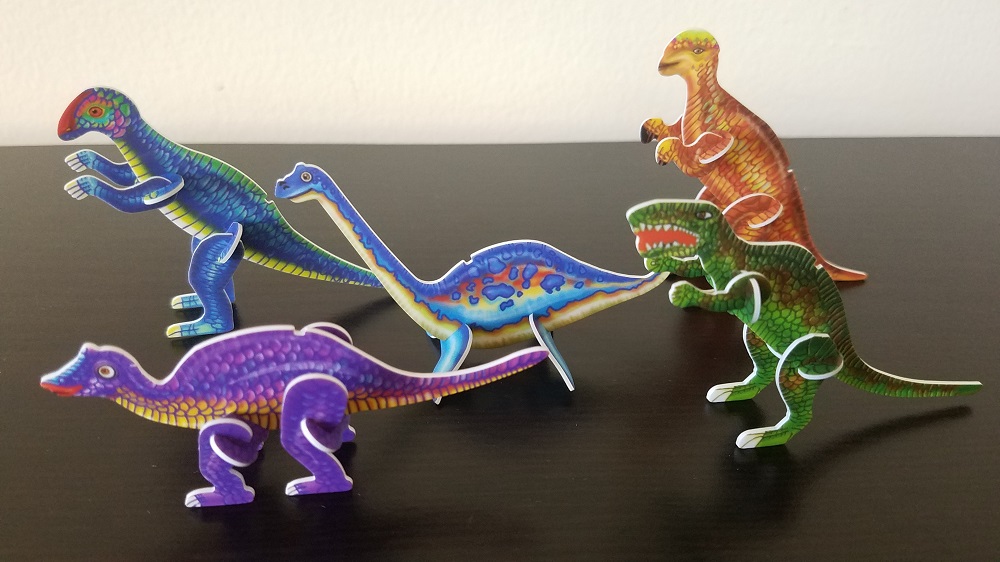
The first model for this set, listed as card # 211, is Homalocephale, a member of the pachycephalosaur family. The “thick-headed reptiles” are famous for their armored skulls, but Homalocephale had less of a prominent dome to its skull shape. Due to Z-Cardz’s fairly stylized depiction, Homalocephale’s signature skull gets lost in translation, save for a large red “nose” painted on to the head. The figure is given a very generic, upright bipedal stance which is not quite balanced enough to keep the tail off the ground. The head and body are oblong and nondescript while the forearms are posed reaching straight out in an almost zombie-like fashion. Coloration of the figure is attractive enough: striped in yellow, blue, and green, with additional pink and red highlights on the face. The manner of application to the figure suggests the animal could have had iridescent scales in life – which is probably highly unlikely, but it looks nice for the toy. Sadly, there’s just not much here to distinguish this model as a Homalocephale, which is a shame because it’s not a genus that gets much pop culture attention. I think I recall myself often using the model to substitute for a hadrosaur in play.
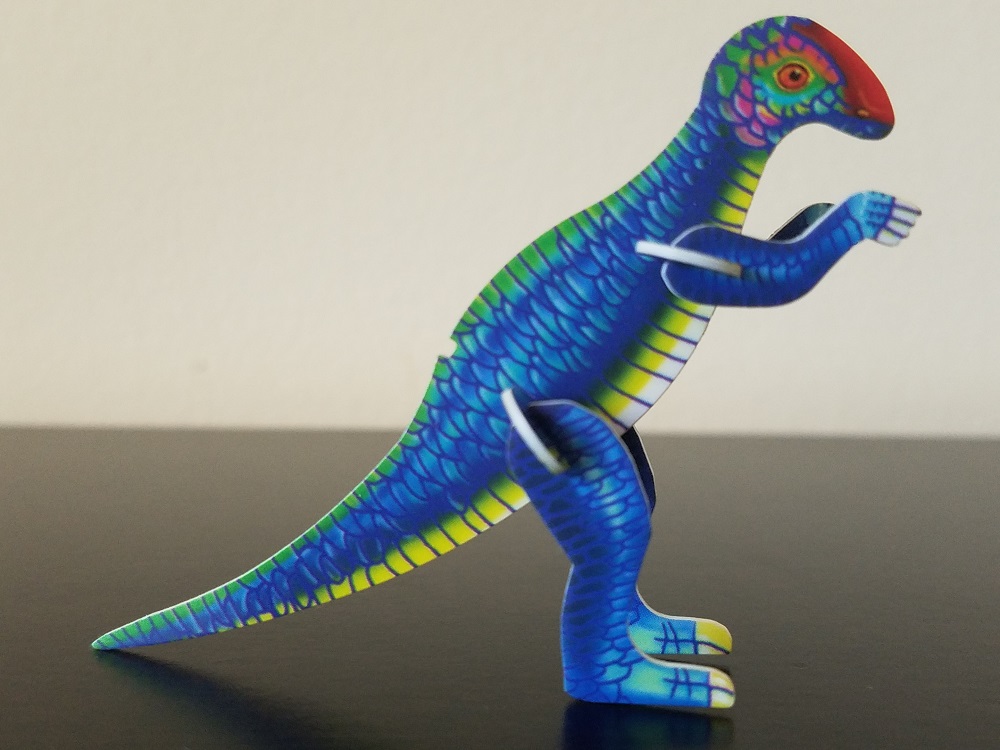
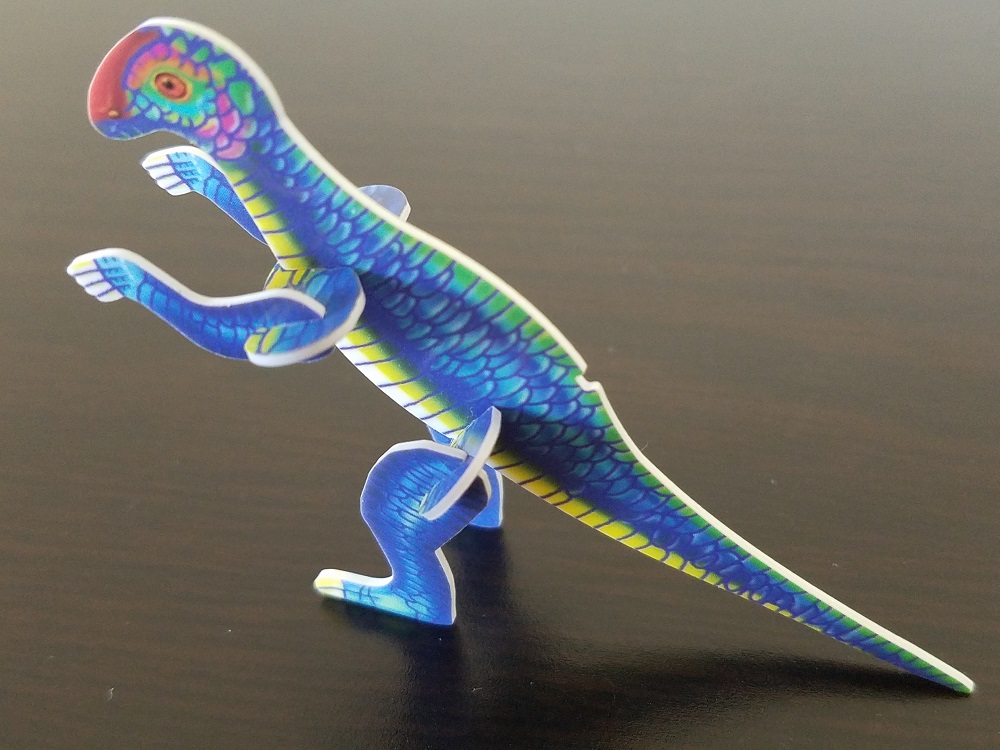
Speaking of hadrosaurs, card #212 of this set is Hadrosaurus itself, one of the very first dinosaurs to be discovered and the namesake of its family. Despite its historical significance, the genus is still poorly known, and tends to be overshadowed by more famous relatives such as Edmontosaurus (AKA Anatosaurus, Anatotitan, and Trachodon) and Parasaurolophus, so its presence is welcome even in a small set like this. Having said that, the model has its share of issues, as to be expected from the line by now. Unlike the Parasaurolophus from the Dinosaur Series 1, this Hadrosaurus is depicted as a quadruped. This is actually an appropriate stance for the genus, which was likely capable of both locomotive stances, however, the Z-Cardz designers made the odd (careless?) choice of shaping the forelimbs’ joints backwards, which is definitely less accurate. The body shape is round with an old-fashioned deep slope to the back and the tail is rather skinny. Hadrosaur tails were much more muscular than commonly depicted, but since it is such a common mistake, it’s not surprising to see here. The head appears to emphasize the popular “duck-billed” image of hadrosaurs, with a sloped snout and large, painted “lips” (obviously meant to be a bill, but the choice of color could be better). Although the skull of Hadrosaurus isn’t known, hadrosaur beaks in general weren’t as broad and duck-like as popularly thought. Overall, the Z-Cardz Hadrosaurus is more of a caricature of the animal than an accurate reconstruction, which is par for the course with the Z-Cards dinos. The figure does come in another attractive color scheme of purple and gold, with light blue highlights to the snout/crest.
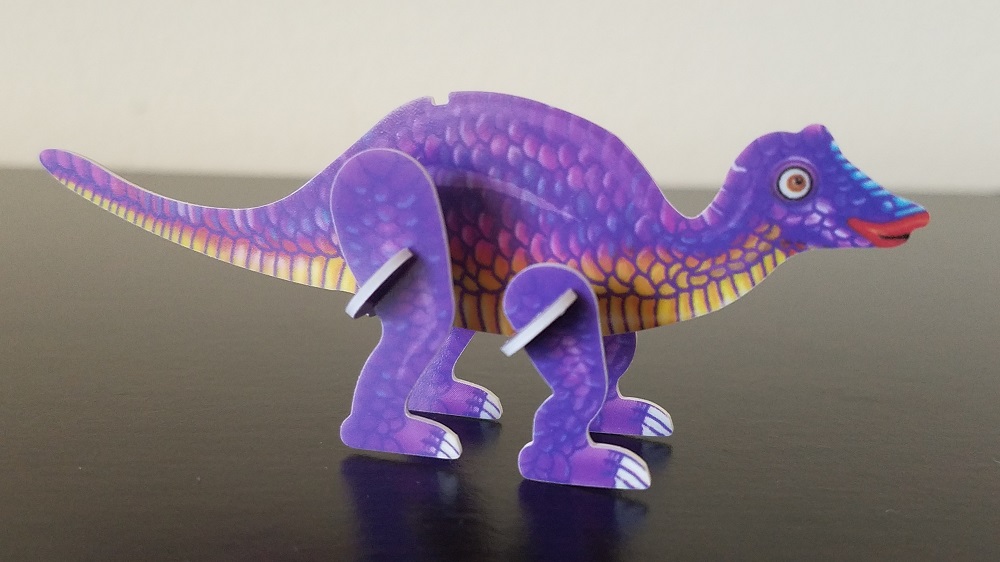
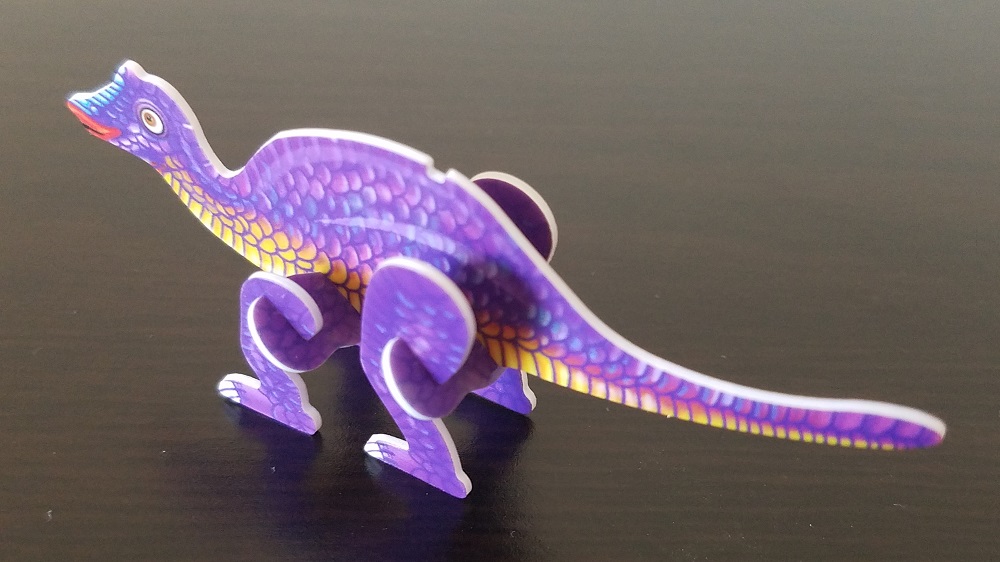
Card #213 is Plesiosaurus, the sole non-dinosaur in this “Prehistoric” set. Known to be a streamlined marine predator, the iconic long-necked reptile is given a more “cutesy” and portly depiction here, with an excessively round body, a straight neck sticking out almost vertically, and curvy flippers positioned to give the figure support. If I’m to be entirely honest, it looks like a cut-out copy of an inflatable bath toy, complete with a smile and big, friendly, round eyes. Some bumps are present over the eyes and nostrils. Perhaps they represent elevated orifices? I’m not sure. The painted-on skin texture is largely smooth, with a few folds and creases along the neck. The color scheme is pleasant again, with gradients of sea blue highlights of red and yellow under splotchy blue spots, which makes for an interesting appearance, The underbelly is mostly a dirty cream-yellow in contrast. Overall, this is probably the most cliched figure in the set, which is not unexpected for the line but still a bit of a shame.
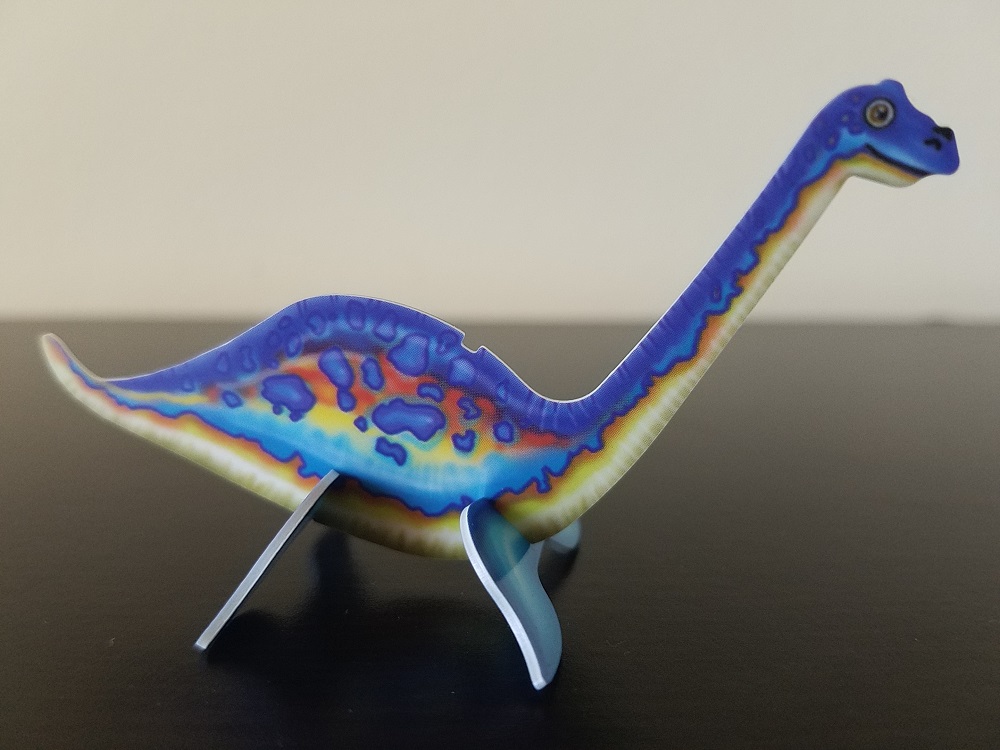
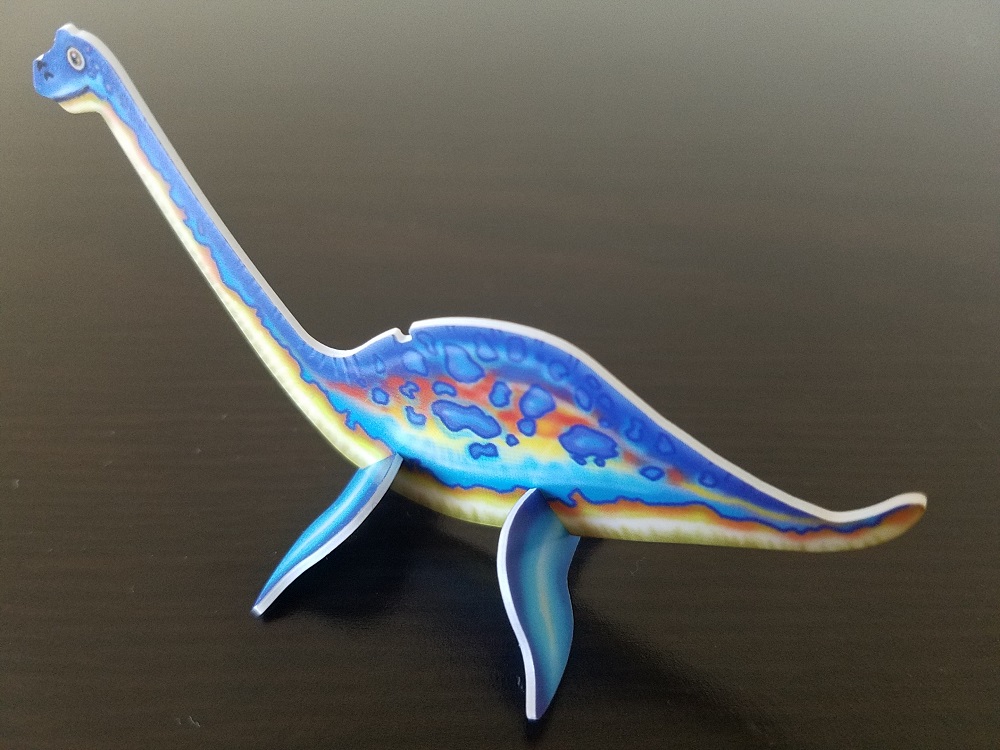
Card #214 is Tyrannosaurus rex, which feels like a surprising latecomer to the line. Clad in rich green scales, with arms outstretched, mouth open and teeth bared, T. rex looks ready for the attack in its classic (albeit woefully outdated) upright posture with the tail dragging along the ground. This all belies the fact that Z-Cardz’s Tyrannosaurus actually looks rather small, even by Z-Cardz standards. The rex is roughly the same length as its fellow dinos, but its build is much more slender than normal; compared to the Allosaurus from the Dino Series 1, it looks downright scrawny. T. rex did go through an “athletic” stage of reconstructions through the 80s and 90s in the wake of the Dinosaur Renaissance, but the Z-Cardz design is definitely taking the concept too far. The model almost appears squashed, with little discerning detail left to the skull or body. The forearms are oddly long, considering this is T. rex we’re talking about here – and somehow they managed to paint three fingers on the hands instead of two (between this and the “Daptosaurus” from the last set, I’m beginning to think the team at California Creations were using reference material a few decades old). Thick overlapping scales are painted along the belly and back of the model, with a rusty red stripe snaking across the flanks and limbs over the predominantly green coloration. It’s a rather conservative design for Z-Cardz, and frankly, it’s a little boring. It’s ironic to see the most famous of all killer dinosaurs get what is one of the most unremarkable treatments within the colorful Z-Cardz line.

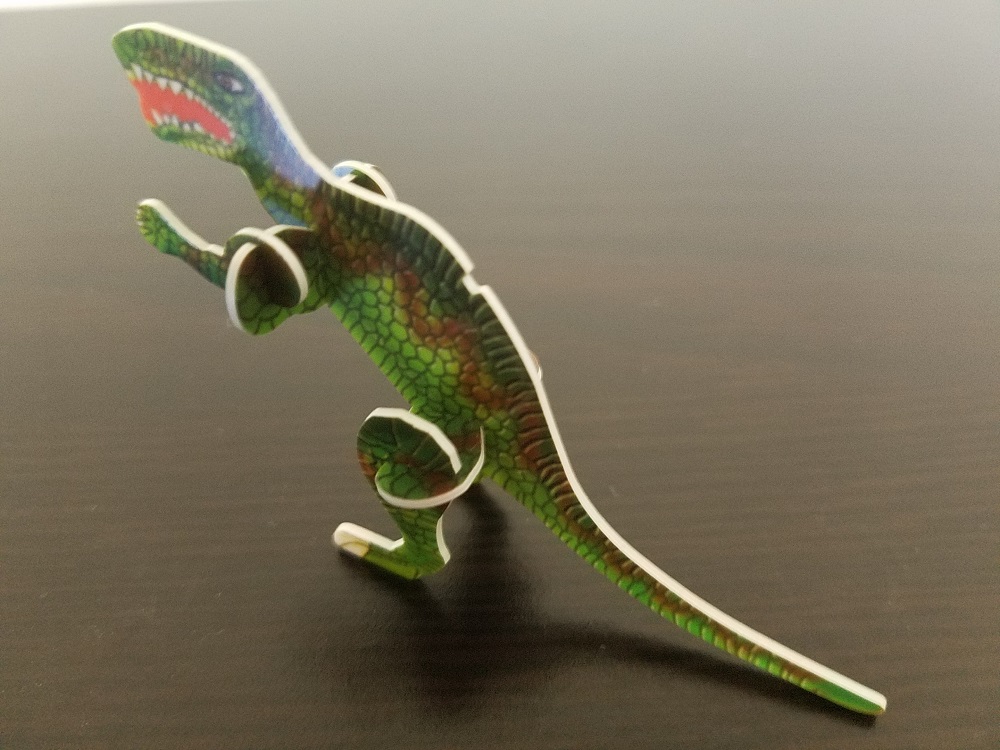
Card #215 is Pachycephalosaurus, rounding out the set with another “bonehead” dinosaur. Pachycephalosaurus is, of course, a more familiar dinosaur than Homalocephale, and thankfully the Pachy’s signature dome head is properly depicted this time, giving the figure’s head an exceptionally round profile. A protruding beak is also present on the head. Elsewhere, the figure is fairly generically designed, with the body posed upright and the forelimbs scrunched into pronated bunny hands. Having the tail resting on the ground helps the figure’s stability, but it’s a shame nothing was done to try further distinguishing this dynamic genus from the rest of the basically-posed figures in this line. The coloration is interesting, at least: golden-brown and orange with shimmering blue and green highlights added to the scales on the flanks. The dome skull is also painted in solid bright green, to better highlight the unique physical feature.
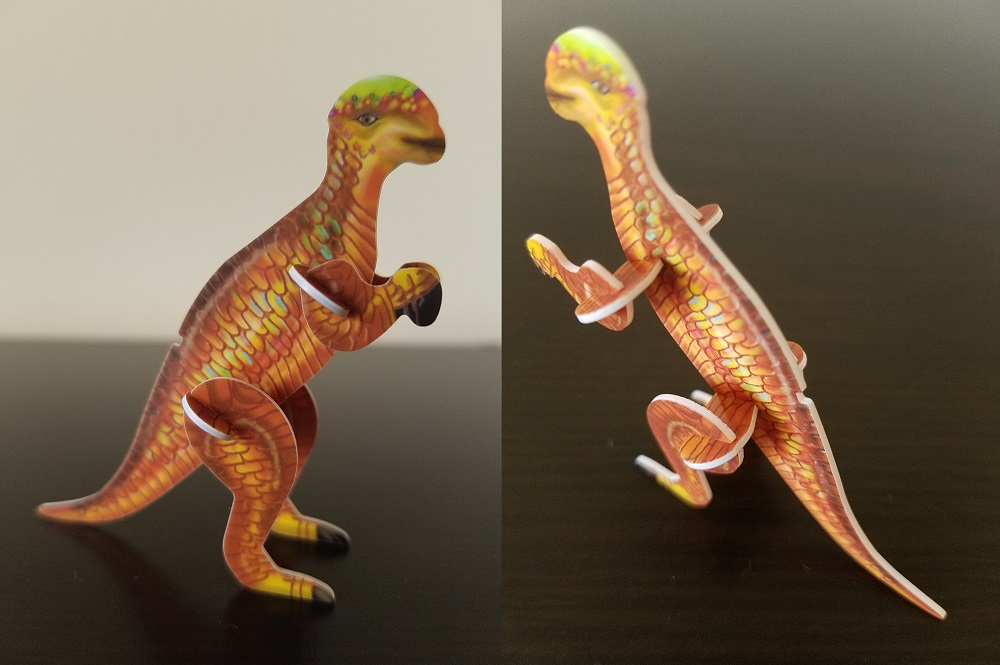
I’m not sure why Z-Cardz chose to label this set as “Prehistoric” instead of “Dinosaur”, since the dino to non-dino ratio is no different from before. The models in this set are a nice set of famous or classic genera, but they definitely leave a lot to be desired as interesting renditions. Still, if one’s curiosity is piqued by this style of collectible, you can occasionally find these used on eBay in complete or randomized sets.
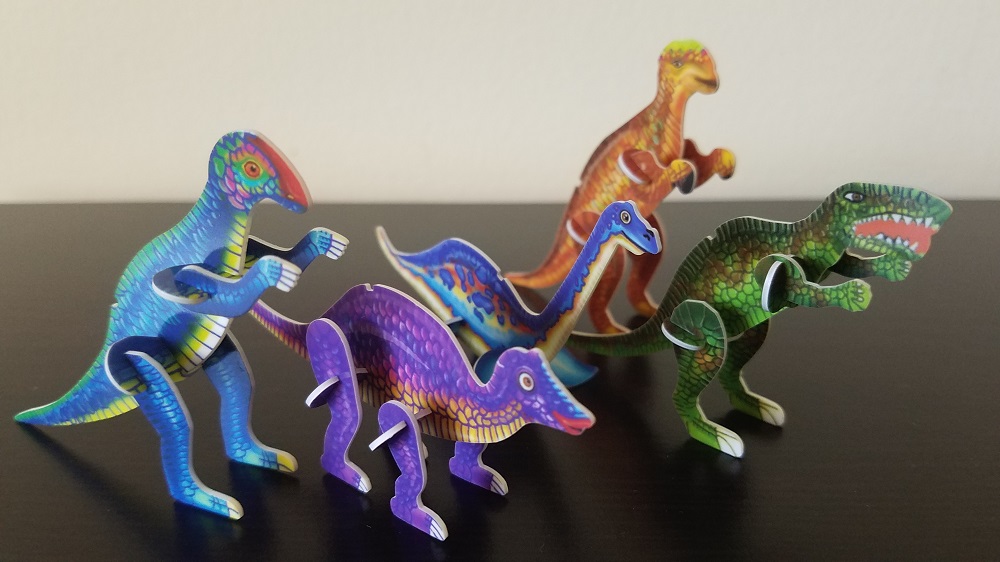
Disclaimer: links to Ebay and Amazon on the DinoToyBlog are affiliate links, so we make a small commission if you use them. Thanks for supporting us!



